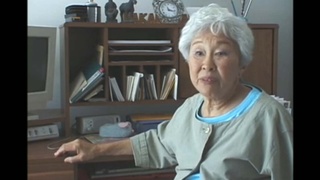Interviews
Starting a YMCA program in camp
As soon as camp opened up, it was April 27th I remember, we left San Francisco on a bus. We got in and as soon as we got in we noticed that kids are just running around wild because there is no structure any longer, no community program, nothing, just nothing. We are all worrying about where to live, and where the next meal is coming from.
And so I asked some of my fellow YMCA folks, from the Japanese YMCA that we had padlocked in San Francisco, and I said, “look we got to do something for these kids,” and they said, “yeah! Let’s do something.” So as YMCA people, we do whatever needs to be done. We started YMCA in camp without calling it the YMCA, so I called it, “YMCA without walls, without staff, just volunteers,” that’s all you require, volunteers and the spirit. I call that the power, and the magic of the YMCA spirit.
That went into action right away, and within a few days I went to the project director and I said, “Can you let us make us a few phone calls because these kids are going to cause trouble if you don't do something, keep them occupied.” And he agreed, he said, “You’re right.” So I made a few phone calls, and then truckloads and cars loads of used equipment showed up at camp. We started hobby clubs, programs, classes, leagues, softball, basketball, whatever equipments we were able to get...we started soccer. So our program really took place immediately.
That same idea spread to other camps, and the national YMCA at this point got involved and established YMCA programs. At that time we couldn’t call it the YMCA, but later they let us call it the YMCA program in camp.
Date: March 4, 2005
Location: California, US
Interviewer: Florence Ochi, Art Hansen, Yoko Nishimura
Contributed by: Watase Media Arts Center, Japanese American National Museum






